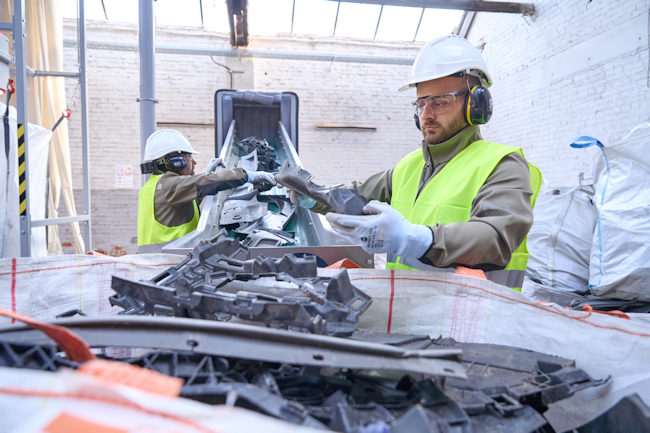Much has been written about self-driving cars, but equally significant technological innovations and advances in the automotive industry are being driven by legislation. The European Commission has issued a directive requiring new vehicles to include at least 25% recycled plastics. The directive also requires valuable parts and materials to be removed from vehicles at the end of their useful life. Both these initiatives are sparking rapid innovation. In this first part of the article, I examine the impact of the directive related to end-of-life vehicle material recovery.
LyondellBasell is expanding a facility in Germany and investing in sorting and recycling technology specifically to process waste from automobiles and white goods. Feedstock will be processed to remove paint and other contaminants and then mechanically recycled into new materials suitable for high-quality applications. The company claims, ‘recycled materials will be incorporated into the LYB CirculenRecover product range, offering more sustainable solutions based on recycled content for demanding applications in the automotive and white goods sectors, including structural parts, interior components, and visible applications.’ However, no details of the energy or GHG savings expected from these feedstocks are provided.
Dow has partnered with Fiori, an Italian company that collects and recycles automotive waste. Dow aims to recycle plastic and polyurethane parts recovered from vehicles and add to its portfolio of recycled materials. Similarly, Covestro is collaborating with partners to establish closed-loop pathways for high-value plastics from end-of-life vehicles. Again, in both cases, no specific information has been shared to demonstrate the potential environmental benefits of these initiatives.
In contrast, Borogue, a joint venture between Borealis (headquartered in Austria) and the Abu Dhabi National Oil Company, is making big claims about a range of new polypropylene products made from up to 70% post-consumer recycled (PCR) plastics. Two products are currently available, the first contains 50% PCR material and delivers a 28% reduction in carbon footprint compared to virgin feedstock. The company claims ‘improved performance, processability, and long-term heat resistance, making it ideally suited for under-body shields, bumper brackets and structural parts in cars.’ The second product, developed specifically for wheel arches, contains up to 70% PCR and achieves a 32% reduction in carbon footprint compared to virgin grades. Borouge now has the capacity to produce 90,000 tonnes of these products annually.
Borealis have also partnered with Neste and Covestro to develop a chemical recycling process to recycle used tires into high-purity polycarbonates. These recyclates can then be used to make parts such as headlamps and radiator grilles. ‘Neste turns liquefied discarded tires into a high-quality raw material for polymers and chemicals manufacturing and supplies it to Borealis. Borealis will then process the Neste-produced raw material into base chemicals phenol and acetone, which are supplied to Covestro. Covestro can use these materials to make polycarbonates. The share of recycled content is attributed via the mass balancing approach all the way to the final products using ISCC Plus certification.’ Although the company claims products are already available from partner organisations, no details of specific products or environmental benefits are provided.
While these announcements are (with the exception of the Borogue PCR feedstocks) light on details of the exact environmental benefits that will be delivered by these projects. Nonetheless, the flourish of activity it commendable. It would appear that EU legislation has effectively motivated significant innovation, targeting vehicles at the end of their useful life and driving circular economy principles throughout the automobile industry. These projects highlight the importance of well-constructed policy interventions in driving sustainable transitions.
In the concluding part of this article, I take a closer look at innovating being driven by the EU directive requiring new vehicles to include at least 25% recycled plastics.
